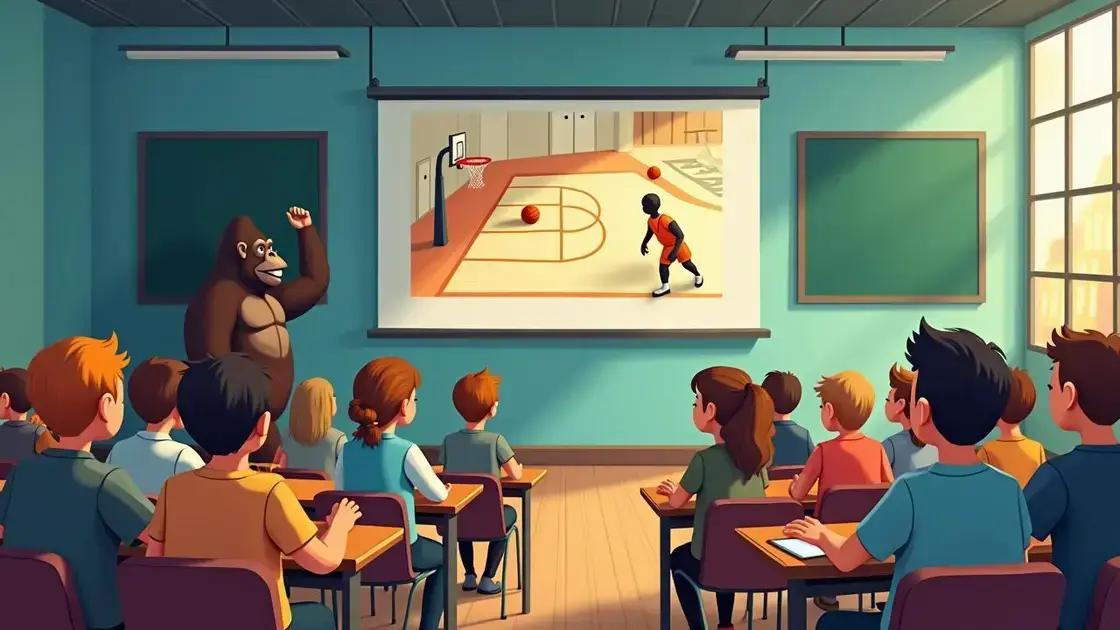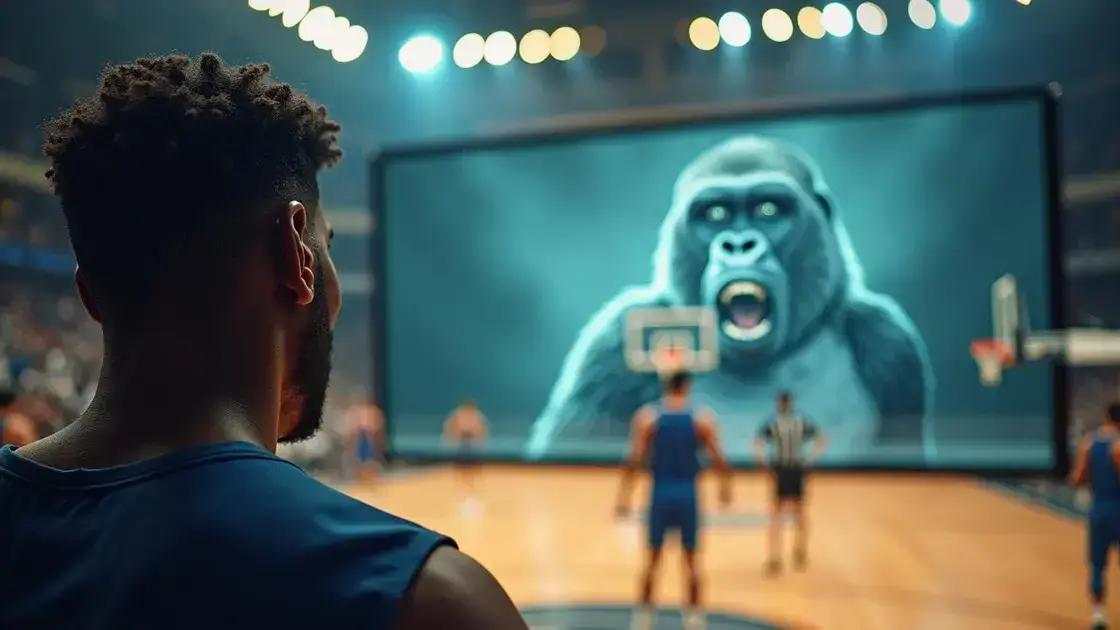The Gorilla Trick illustrates the concept of selective attention, where viewers miss a gorilla in a video while counting basketball passes. This phenomenon highlights the limitations of human perception and the impact of inattentional blindness, emphasizing the importance of being mindful in our daily lives.
Have you ever wondered about the mystery behind the Gorilla Trick? This captivating phenomenon has intrigued people for years. Understanding its origin and the psychological principles at play can reveal why it captivates audiences so effectively. In this article, we will delve into the history behind the Gorilla Trick and uncover the psychological insights that explain its appeal.
The History Behind the Gorilla Trick

The Gorilla Trick has a fascinating history that dates back to psychological studies and demonstrations of attention and perception. Originally, this trick emerged from experiments that explored how human beings process visual information.
Origins of the Gorilla Trick
The Gorilla Trick became famous in 1999, thanks in part to a video created by psychologists Daniel Simons and Christopher Chabris. They designed a simple yet profound experiment to illustrate how our attention can be deceived. Participants were asked to watch a video of two teams passing a basketball and count the number of passes by one team.
While viewers focused on counting the passes, unexpectedly, a person in a gorilla suit entered the scene and walked across the court, pausing to thump its chest. Surprisingly, about half of the viewers failed to notice the gorilla. This shocking revelation highlighted the limitations of human attention and how it can be easily manipulated.
Impact on Psychology and Popular Culture
The Gorilla Trick not only influenced psychology but also penetrated popular culture. The video served as a compelling educational tool in classrooms, encouraging discussions about attention, awareness, and the concept of selective perception. Over time, this trick has been featured in various media forms, including television shows and advertisements, capturing the public’s imagination.
It has become a classic example used by educators and professionals to discuss cognitive biases and how the brain interprets visual stimuli. This history marks the Gorilla Trick as not only an entertaining illusion but also a significant educational resource in understanding human cognition.
Psychological Insights into the Gorilla Trick

The Gorilla Trick provides fascinating psychological insights into how our minds process information. It exemplifies the concept of selective attention, which is our ability to focus on specific stimuli while ignoring others. This cognitive process plays a critical role in how we perceive the world around us.
The Role of Attention
When people watch the Gorilla Trick video, they try to concentrate on counting basketball passes. This focus leads them to miss the unexpected appearance of the gorilla. This phenomenon shows that when we concentrate on one task, we often become blind to other important details. This is known as inattentional blindness.
Inattentional blindness occurs when a person fails to notice a fully visible but unexpected object because attention was engaged on another task. The Gorilla Trick highlights that our attention has limits. Therefore, what we believe to be true may not always reflect reality.
Implications for Everyday Life
The insights from the Gorilla Trick have important implications for daily life. For instance, when multitasking, people may overlook crucial information or make mistakes. This can happen while driving, working, or even at social events. Understanding our limitations can help us improve our awareness and decision-making skills.
Furthermore, studies following the Gorilla Trick have found that factors like familiarity and expectation greatly influence what we see. Our prior knowledge can shape our perception, making us more susceptible to ignoring unexpected elements.
Understanding the Power of Attention and Perception
The Gorilla Trick serves as a powerful reminder of our cognitive limitations regarding attention and perception. It illustrates how focused tasks can lead us to miss significant details, emphasizing the importance of selective attention in our daily lives.
This psychological insight not only informs how we engage with information but also highlights the implications for decision-making and awareness in various situations, from driving to everyday interactions.
By recognizing the effects of inattentional blindness and other cognitive biases, we can improve our observation skills and enhance our ability to notice the unexpected. Ultimately, the history and psychological insights of the Gorilla Trick encourage us to be more mindful and attentive in an increasingly distracted world.
FAQ – Frequently Asked Questions about the Gorilla Trick
What is the Gorilla Trick?
The Gorilla Trick is a psychological experiment demonstrating selective attention, where viewers miss an unexpected gorilla while counting basketball passes.
Why do people miss the gorilla in the video?
People miss the gorilla due to inattentional blindness, which occurs when their focus on counting passes prevents them from noticing the unexpected element.
What does the Gorilla Trick reveal about human cognition?
The Gorilla Trick highlights the limits of human attention and how our focus can shape our perception of reality, making us overlook significant details.
How can understanding the Gorilla Trick help in daily life?
Understanding the Gorilla Trick can enhance awareness and decision-making skills, reminding us to be mindful and attentive in various situations.
What are some implications of selective attention?
Selective attention has implications for multitasking and daily tasks, as it can lead people to miss important information or make errors.
Is the Gorilla Trick used in educational settings?
Yes, the Gorilla Trick is frequently used as an educational tool to illustrate concepts of attention and perception in psychology classes.












